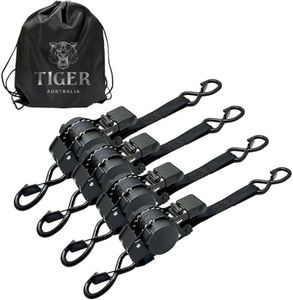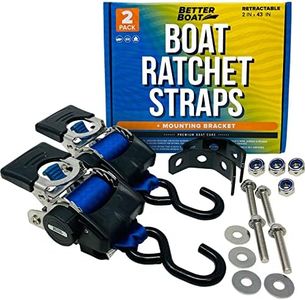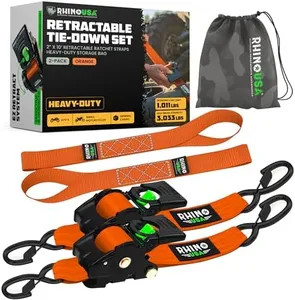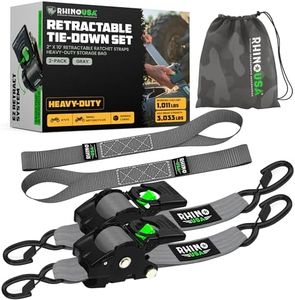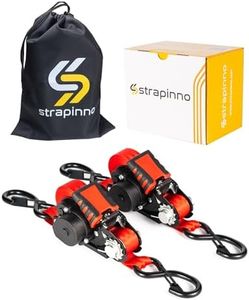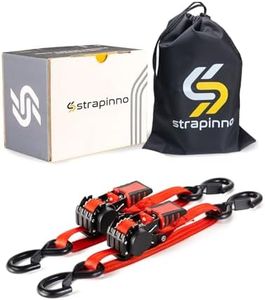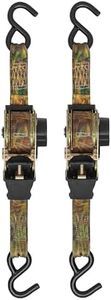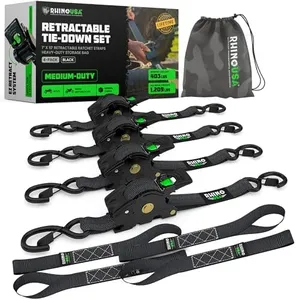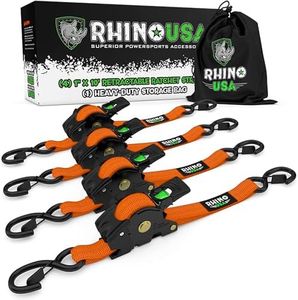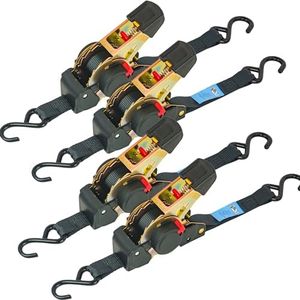We Use CookiesWe use cookies to enhance the security, performance,
functionality and for analytical and promotional activities. By continuing to browse this site you
are agreeing to our privacy policy
10 Best Retractable Ratchet Straps
From leading brands and best sellers available on the web.Buying Guide for the Best Retractable Ratchet Straps
Retractable ratchet straps are essential tools for securing loads during transport, commonly used for tying down items on trailers, trucks, or roof racks. Choosing the right retractable ratchet strap ensures not only the safety of your cargo but also convenience during use. Understanding the key specifications will help you select a product that fits your specific needs and guarantees ease of use, reliability, and durability.Working Load Limit (WLL)The Working Load Limit (WLL) is the maximum weight that the ratchet strap is designed to safely handle during normal use, usually specified in pounds or kilograms. This is important because choosing a strap with too low of a capacity can result in unsafe load securing, risking both your cargo and safety. WLL values typically range from a few hundred to several thousand pounds; lighter straps are suited for small items like bikes or boxes, while higher-rated ones are best for heavy appliances, furniture, or vehicles. To pick the right one, estimate the total weight of your cargo and ensure your strap's WLL comfortably exceeds that amount.
Strap LengthStrap length refers to how long the actual webbing of the ratchet strap is when fully extended. It is crucial because too short a strap may not reach around your cargo, while overly long straps can be unwieldy. Retractable ratchet straps commonly range from six feet for small, compact tasks to over twenty feet for larger securing jobs. When choosing length, consider the size and shape of what you'll be tying down, making sure you have enough length to wrap around or over your cargo with a little extra to operate the ratchet.
Strap WidthThe width of a ratchet strap impacts its strength and how well it can distribute pressure across your cargo. Wider straps can generally handle higher loads and offer better protection to delicate surfaces, while narrower ones are lighter and more flexible for small or oddly-shaped items. Strap widths usually range from 1 inch for lighter, everyday use up to 2 inches or more for heavier items. Match the strap width to the size and weight of your cargo, choosing wider straps for bulkier or more fragile goods.
Retractable MechanismThe retractable mechanism allows the strap to automatically rewind and store itself, reducing tangles and making setup and cleanup faster. This feature is important for convenience and for preventing damage to the strap from improper storage. Some mechanisms work more smoothly than others, and the level of retention can vary, which affects ease of use. If you expect to use your straps frequently or need to avoid messy storage, look for well-reviewed, smooth-operating retractable mechanisms.
Hook TypeHooks are the parts at the end of the straps that anchor onto your vehicle or trailer. They come in various shapes such as S-hooks, J-hooks, or flat hooks, and each works best with different kinds of anchor points. Choosing the right hook type ensures your strap will stay securely attached during transport. To pick the best one, examine your vehicle's tie-down points to determine which hook shape will provide the most secure and hassle-free fit.
Material and Weather ResistanceThe material of the strap webbing and ratchet components determines durability and resistance to weather. Look for polyester or nylon webbing for good strength and minimal stretching, and for corrosion-resistant coatings on metal parts if you plan to use the straps outdoors or in wet conditions. If your use case involves exposure to sun, rain, or abrasion, prioritize straps specifically rated for UV and weather resistance to ensure longevity.

